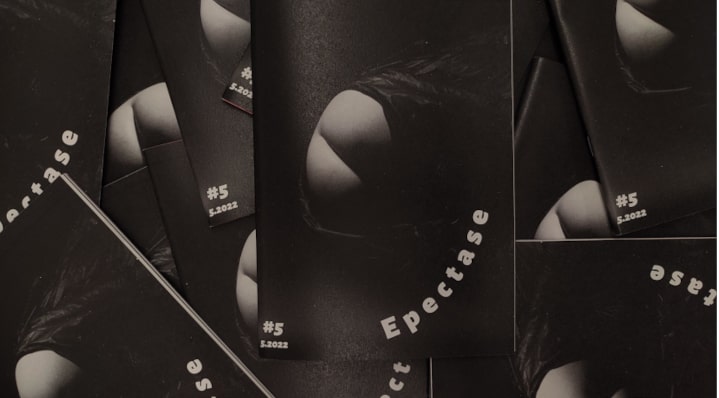For two years and six months, the Epectase magazine has been following its little path. Here is the 5th issue. This issue in four languages includes contributions from 9 different people from 6 different countries.
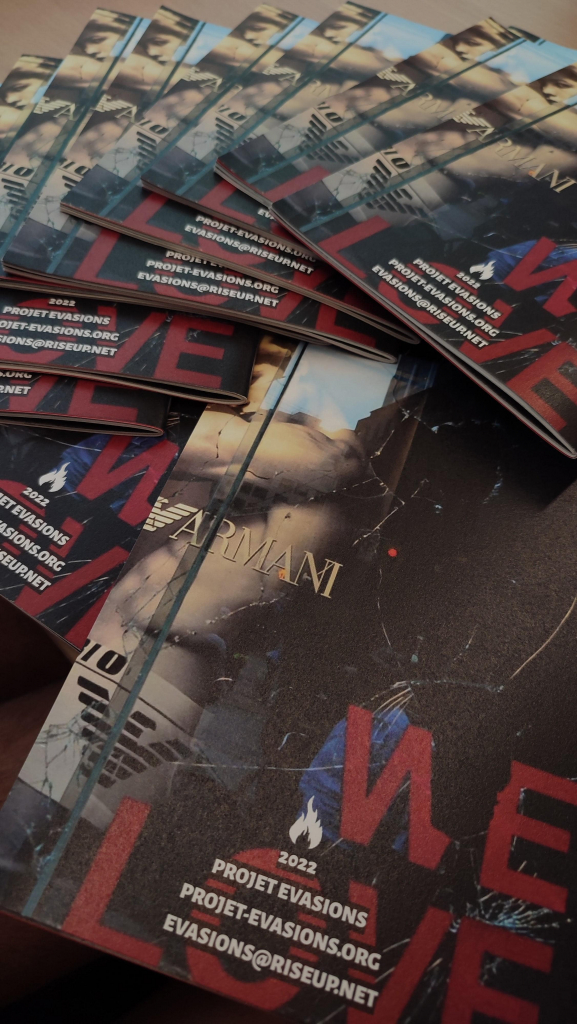
Epectase was born from a desire to bring together various approaches, reflections and visions around eroticism. A wild eroticism that does not allow itself to be enclosed in norms, labels or moral judgements. An eroticism that seeks to emancipate itself from oppressive patterns and positions of authority.
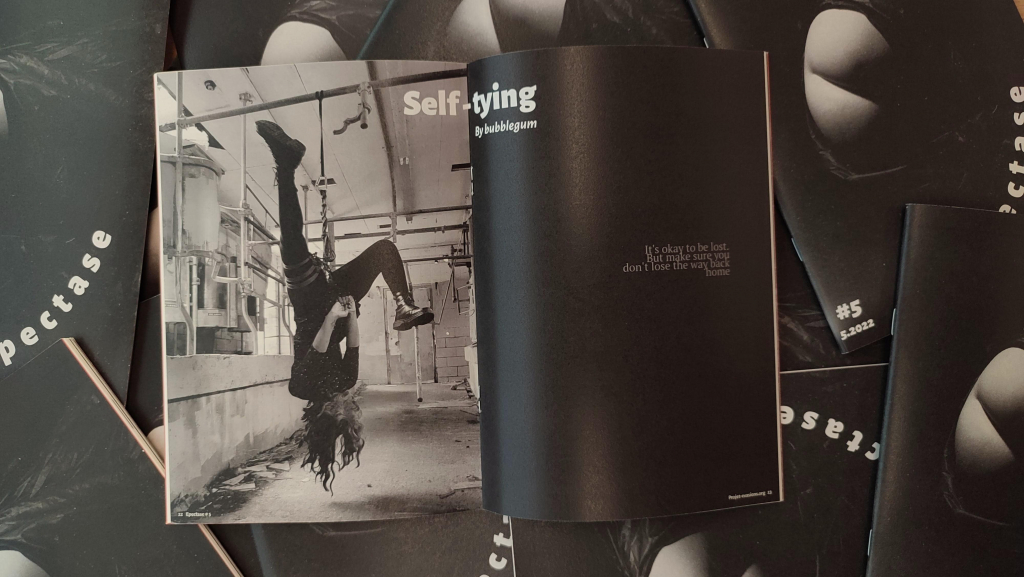
Thanks to the enthusiasm and support of many people Epectase is now also available in Italian. We remind the concept: Your contributions can be sent in any language and are then translated into French, German, English and now Italian. The original languages are printed in the paper version, and the translations are published on our website. Only the poems are not translated.
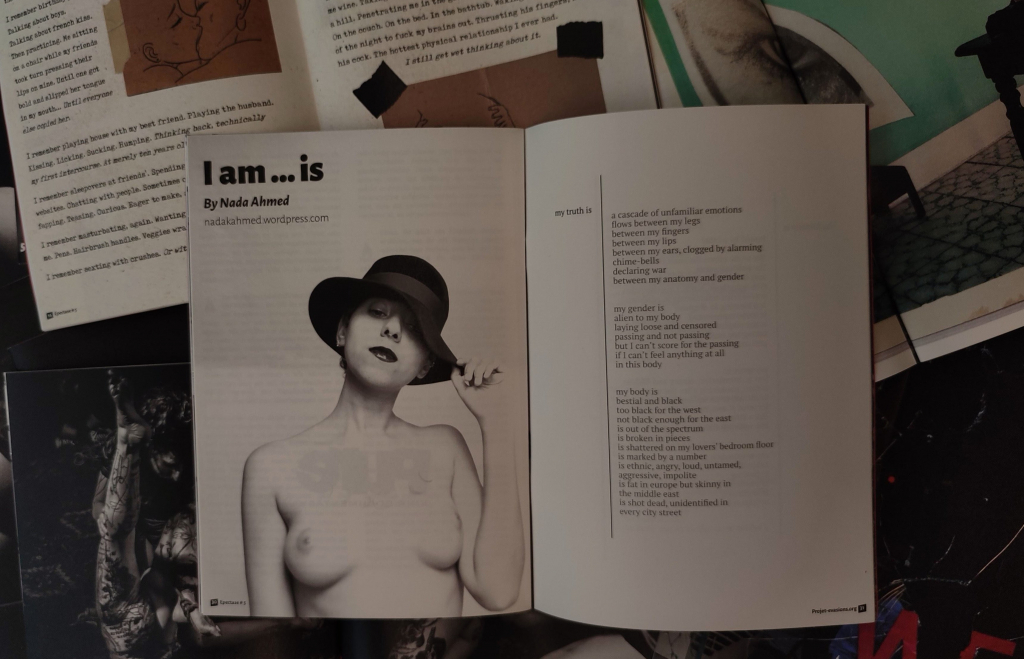
Below are the english translations:
Slides a hand between the legs of fate.
Text von Carmine Mangone / https://carminemangone.com
Collage von Alberto Sipione

I remember the early days. Your provocative red and black lingerie. For me it was like seeing you dressed only in anarchy. The world we knew found its subversion in this room, in this space henceforth without world, towards which attracted us the fascination of a threshold, of a transit.
You and I, openings on a flesh that melted and recomposed itself, around new truths.
But one does not succeed in seizing the character of the bodies, of our bodies, if one sees there the simple representation of an exceptional event, which took place and which one endeavours to report.
Love is not the relation of the event, but the event in itself, its approach, the common place unceasingly reiterated, the experience to come, and yet already present, in the narrative that we keep silent, which dies before even being born and prepares its future accomplishment through the seduction that sits there in all our power. Love cannot be told, love cannot be lost in the power that tells it. What could we restrain? What nostalgia of the flesh could justify the asylum of the bodies in a narrative?

The gods have always envied carnality, they have always sought to disembody love in order to defuse it and reduce it to prescriptions, to liturgies. By leaving their ultra-mundane dimension, they have often incarnated to covet or redeem an anarchic, impatient humanity. But no god resists in the flesh, no god is strong enough to die forever through his earthly incarnation.

I found you adorable when you manifested the joy of your sex between the lacy embroidery of modesty. You gave a simple and immediate definition to my idea of truth. The flesh I touched filled and cherished this idea, as much as I loved you. I could not contain you in one idea. Your presence was the smile of a whole body, the joy of a matter that smiled with the lips of each of your desires. Can you blame me for wanting to seek the truth between the folds of your carnal intelligence? I do not reduce you to its interior and I do not make a principle of faith of it.

You tell me that the truth of which I speak does not exist. But you are mistaken. This truth exists and is recombined every day in the flow of contacts and thoughts that unite us. Only this flow concretizes and heals the world that opens between us.
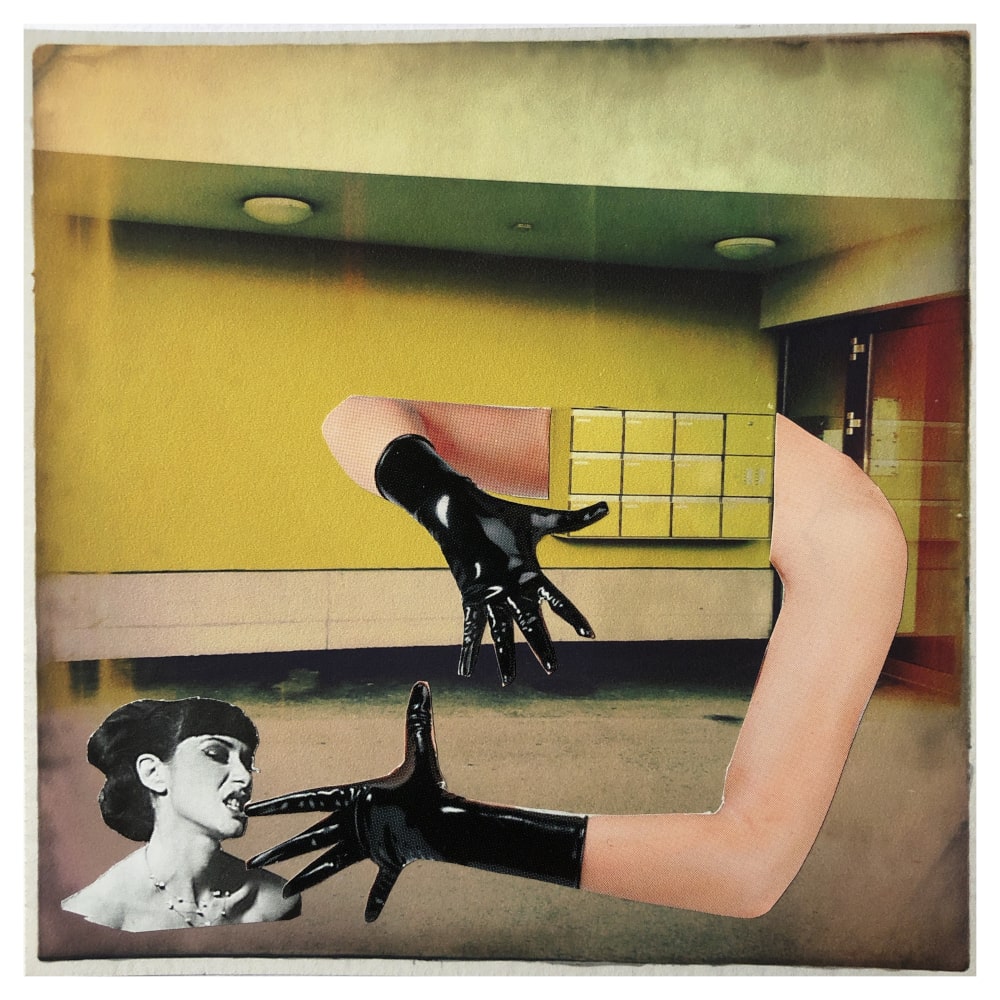
Some write and believe they are communicating something. Some think they are poets. I don’t communicate anything; I just try to make my life – and yours – for myself. I find it hard enough to remain human without becoming pedantic to myself. And now I have to burden myself with your doubts? – My doubt is you.
Interview with the “Pure Kink Documentary”
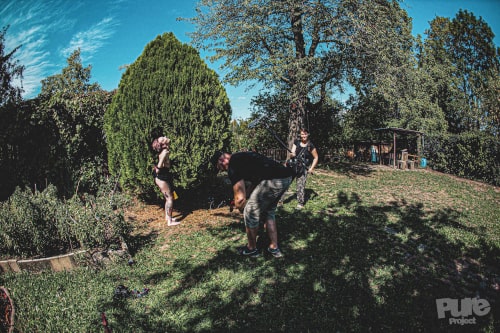
Can you summarize the Pure-Kink project in a few sentences ?
PURE-KINK is a common project of Swen Brandy (CARNIVORE), Sebastian Salvor and Peppermind. It consists of several documentary episodes, each of which portrays one or more protagonists and their sexual inclinations. It is mainly about practices that can be classified in the field of BDSM, kink and fetishism. But we also deal with themes such as sexual orientation, identity and self-determination. It is especially important for us to show these themes through the interviewee. We don’t want to reduce our protagonists to a trend or practice, but to tell about people who thrive in their sexual activities.
I understand your project as an initiative from the BDSM community about the BDSM community. Is this position as a concerned person important to you? Do you think this position is necessary to talk about BDSM?
We think this perspective is especially necessary to make others understand what BDSM is. This starts with knowing what we are focusing on when we talk about it. BDSM is a complex subject, in which there is usually a lot to talk about and show. People with little knowledge are often overwhelmed and don’t know exactly what to focus on. Therefore they often focus on the “differences” or aspects that seem particularly spectacular or extraordinary. But these themes are not necessarily suited to make BDSM understandable as a culture. Instead, they promote the idea that people who are close to BDSM are a marginal and exotic phenomenon. As practitioners of BDSM ourselves, however, we know very well what motivates people to engage in these inclinations, and what desires, needs and emotions are associated with them. This knowledge makes it easier for us to portray these aspects in our films.
Feminism, self-determination, sexual freedom and consent are topics that you cover. What echo have you encountered so far in a BDSM world that is still very heteronormative?
So far, we haven’t had any negative reactions. Perhaps because our films are preferably aimed at people who are open to these themes. Generally speaking, we have the impression that interest in these themes is growing in the community, especially among the younger generation. That’s why we’ve received quite positive feedback so far about including these perspectives.
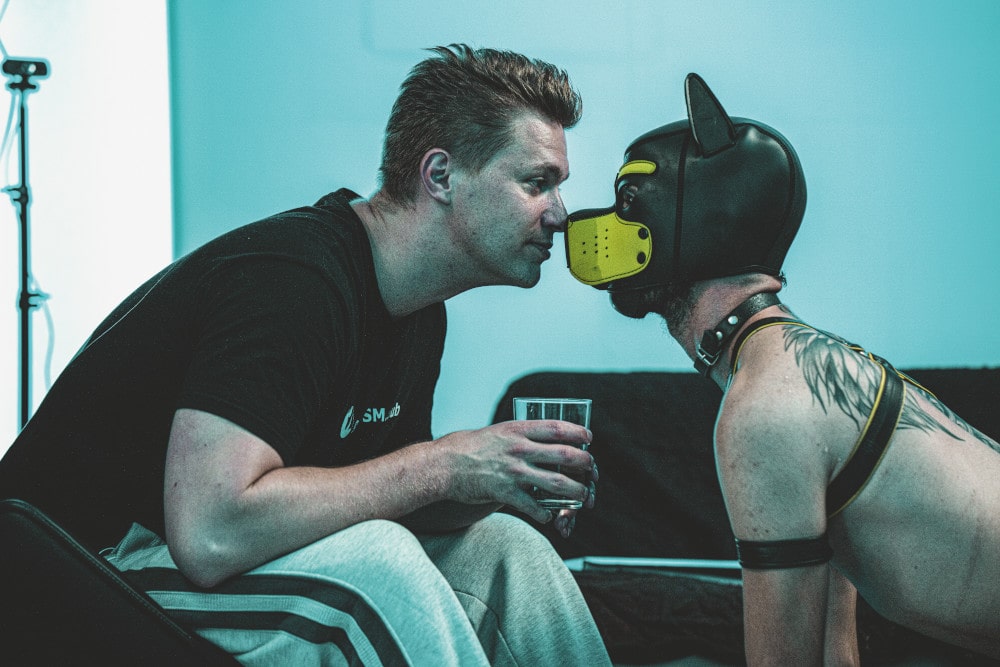
You write that you do not reduce the protagonists to their sexual practices, but that you show people who have certain sexual inclinations. I think this is a very beautiful vision in an environment that still strongly associates a person’s kinks with their identity. Can you explain a bit about what led you to develop this vision?
All those who immerse themselves in the world of BDSM are confronted at one time or another with the contradiction that their own experiences in the world of BDSM differ greatly from the image that still prevails in our society. It is not uncommon to hear that people who have just arrived in the BDSM-World find it much more open and positive than they initially expected. If, after these experiences, one re-reads accounts of BDSM, one quickly realizes that they are often biased or incomplete. At best, they prevent one from identifying with the people they portray, at worst, they even provoke disgust. I think that everyone who has been in this business for a long time must sooner or later confront this dissonance. That’s why our goal is to contribute to a more complete view by taking another point of view and complementary perspectives. So that more people can have real access to BDSM or at least a better understanding of it.
By profiling people in the Kink world, you create a platform for some people. This is also what we do with Epectase magazine. We quickly asked ourselves questions such as: who does this platform give space to, who can create visibility for themselves, how is it possible that people who are often not represented feel confident to take this space, how can we avoid reflecting the usual norms of society. What are your thoughts on this?
We try to ensure that our protagonists have some diversity, for example in terms of age, kinks, gender and sexual orientation. But we also know from experience that “fitting the norm” is not an absolute. Rather, each person has aspects in which they fit a certain norm or standard and areas in which they deviate from the norm. Our goal is therefore not to focus on one or the other of these aspects but rather to show a complete picture of the person, in which both can coexist. And we believe that this is precisely what is decisive to move away from stigmatization. Because stigmatization does not only mean that some people feel excluded, but also that people cannot really show who they are. For example because they fit the social norm in some aspects of their person and not in others. To increase visibility, we must therefore also resolve these alleged contradictions by showing that what is allegedly “different” is much more normal than we tend to think.
Can you tell us a little bit more about how you handle consent during the shoot, the tools you use. Do you have any advice to give?
As far as the consultation with our protagonists is concerned, we follow the basic principle that we try to clarify as much as possible beforehand, so that we can act as freely as possible during the shooting and post-production. To do this, we always start with a preliminary meeting in which we get to know each other, clarify the general conditions and discuss potential themes that could be the subject of the episode. In addition, we make sure that the protagonists already have a certain stability in their sexual practices and that they are in agreement with showing them openly to the outside world. As this is a basic requirement for us, we want to be able to show the faces of the protagonists in a clearly recognizable way.
We don’t really use any specific tools, except for the agreement that we set by contract. As we want to show the actors in the most authentic way possible, we let them manage the consent between themselves (we ask if we can film some aspects of this consent practice). We will only intervene if we find that there is insufficient agreement or too great an imbalance in the balance of power. But this has not yet been the case.

